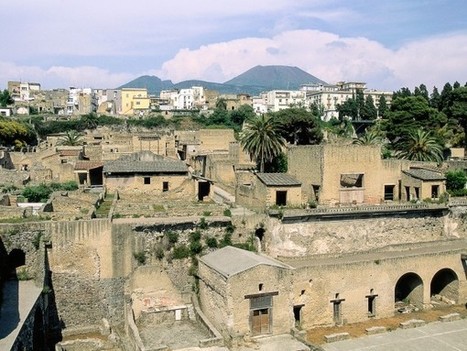To read the whole article, please go to
http:/ /news.sciencemag.org/archaeology/2015/01/physicists-read-scrolls-scorched-ancient-volcano

Herculaneum photo by SANDRO VANNINI/CORBIS
Pompeii wasn’t the only Roman town destroyed when Mount Vesuvius erupted in 79 C.E. The blast of hot air and rain of volcanic ash also reached nearby Herculaneum (pictured above), where it entombed a library of papyrus scrolls. Unfortunately, it also transformed them from pliable parchment into little more than blackened, carbonized lumps. Archaeologists have tried several techniques to unroll the scrolls since the library was discovered in the 1750s, but they always ran the risk of destroying them in the process. Now, a new technique using high-energy x-rays offers a nondestructive way of reading these ancient texts. By placing a rolled up scroll in the path of a beam of powerful x-rays produced by a particle accelerator, researchers can measure a key difference between the burned papyrus and the ink on its surface: how fast the x-rays move through each substance allows them to differentiate between the scroll and the writing on it . Although they’ve managed to read only a few complete words so far. The handwriting style is characteristic of texts written in the middle of the first century B.C.E.; in fact, it looks a lot like the handwriting on a previously unrolled scroll attributed to the philosopher Philodemus, the team says. More studies with even higher energy x-rays are needed to reconstruct the whole text on this and other scrolls, but the technique offers the possibility of reading works that haven’t been seen for nearly 2000 years.

